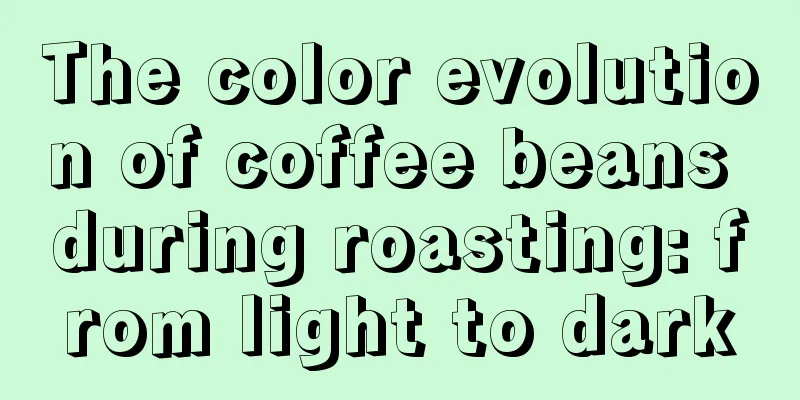The color evolution of coffee beans during roasting: from light to dark

The color evolution of coffee beans during roastingCoffee is one of the world's most popular beverages, and the roasting process of coffee beans determines their final color. From light to dark, coffee beans go through a fascinating evolution. This article will take a closer look at this process and explore the characteristics represented by each stage. 1. Light roastLight roasting means that the coffee beans are heated at a lower temperature for a shorter time. This treatment allows the coffee beans to retain most of their original flavor and acidity, and produce a bright and clear color. After light roasting, the coffee beans appear light yellow or light brown, sometimes even with a reddish or bluish hue. 2. Medium (City) RoastMedium (city) roasting is when the coffee beans are subjected to marginal heating at a slightly higher temperature for a period of time. This treatment reduces the acidity of the coffee beans while increasing the sweetness and bitterness. After medium roasting, the coffee beans are darker brown, sometimes with some reddish brown. 3. Medium to dark (full city) roastMedium to dark (full city) roasting means that the coffee beans are heated at a higher temperature for a period of time. This treatment makes the coffee beans fuller and more shiny, and produces a rich and balanced taste. After medium to dark roasting, the coffee beans appear darker chocolate brown or chestnut color. 4. Dark (French) roastDeep (French) roasting refers to the intense heating of coffee beans at very high temperatures for a period of time. This treatment forms a thick and smooth layer of oil on the surface of the coffee beans, and produces a rich and bitter taste. After deep roasting, the coffee beans appear very dark chocolate or black. 5. Extreme Roast (Italian Style)Extreme roasting (Italian style) means that the coffee beans are subjected to strong heating at extremely high temperatures for a period of time. This treatment forms a very thick and smooth oil layer on the surface of the coffee beans, and produces an extremely rich and bitter taste. After extreme roasting, the coffee beans appear completely black, with almost no other color. SummarizeFrom light to dark, coffee beans go through a fascinating evolution. Different degrees of roasting will bring different taste and flavor characteristics to coffee. Choosing the roasting degree that suits your taste preferences is one of the keys to tasting delicious coffee. |
<<: Roasted coffee beans for a more aromatic taste
>>: Choose the most suitable coffee beans to take your coffee taste to the next level
Recommend
Portable coffee cup recommendations, 12 portable coffee cup brands, allowing you to enjoy coffee time anytime, anywhere
Here are 12 brands of portable coffee cups that a...
The secrets of brewing coffee beans are revealed, so you can drink the delicious coffee!
Coffee Bean Selection To brew a delicious cup of ...
Coffee and blood vessels, a wonderful chemical reaction
After the caffeine in coffee enters the blood ves...
Starbucks coffee price survey: How much does a cup of coffee cost?
Starbucks Coffee Price Survey Starbucks is a well...
How much do you know about the varieties of coffee and their unique flavor characteristics?
How much do you know about the varieties of coffe...
Top 10 luxury coffee cup brands in the world
The world's top ten luxury coffee cup brands ...
Top of the instant coffee rankings, explore the king brand of instant coffee
There are many brands in the instant coffee marke...
How to choose the best coffee brewing pot? You will understand after reading this article (with detailed explanations and pictures)
As a production method that fully displays the fla...
The secret of coffee in the eyes of an old Chinese medicine practitioner, exploring the benefits of coffee
An old Chinese doctor explored the secrets of cof...
Opening a coffee shop: investment and operating costs revealed
Opening a coffee shop requires huge investment an...
What major should I choose when applying for graduate school to open a coffee shop?
What major should I choose when applying for grad...
Is it toxic to brew coffee beans directly? Analyze the truth!
Is it toxic to brew coffee beans directly? Analyz...
Detailed explanation of the production process and methods of coffee beans
Coffee beans are one of the common foods in our d...
How to choose a suitable coffee bean roasting machine
Choosing the right coffee bean roasting machine i...
How to choose coffee beans?
Selecting coffee beans is a task that requires ca...









